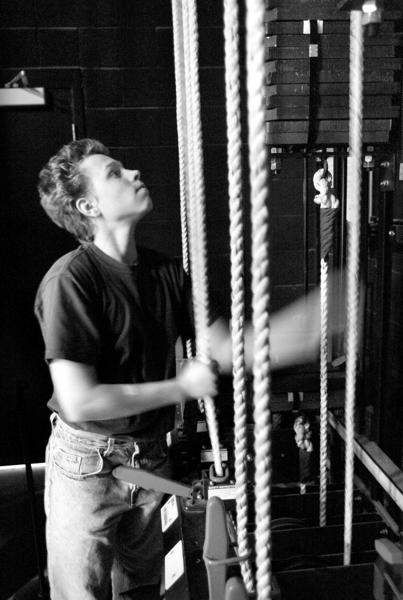Lights, soundboard, action
Published 5:00 am Wednesday, October 4, 2006

- La Pine High School theater arts technology student Nicholas Patrick, 17, lowers a curtain Tuesday morning in the school's new theater.
LA PINE – Nicholas Patrick, a senior at La Pine High School, is seeing his theater arts technology class in a new light.
Scheduling issues led Nicholas, 17, to take Daren Vom Steeg’s class, which teaches students how to control the lighting and sound equipment so crucial to plays.
”Taking this class was an accident, but it’s the best accident that’s ever happened to me,” he said.
Nicholas and his six classmates are the first students at La Pine High School to get instruction on how to use the complex lighting and sound consoles for the school’s new stage and auditorium. The 404-seat thrust theater, completed in the spring, allows the audience to sit on three sides of the stage.
Vom Steeg is still taking inventory of the new equipment purchased with the 2001 construction bond, which financed construction and large-scale maintenance projects throughout the district. The new addition cost the school district about $3 million; the total cost for the new lighting and sound system cost about $150,000, he said.
Previously, the high school had a cafetorium, or combination cafeteria and auditorium, supplied with only about a dozen lights operated by the school drama teacher, Vom Steeg said.
The old cafetorium had a seating capacity – consisting of folding metal chairs – that could fit close to 300 people, said Principal Charlie Beck.
While most of the students have never set foot behind a stage, they are learning to run complex computer-operated lighting and sound systems that enable a stage production to take place.
The school has a strong theater program with a long-standing tradition, Beck said.
”The lighting and sound system is just kind of state of the art right now,” he said.
The advanced technology, once only available in New York City and Los Angeles, is now being installed in school districts around the country.
”We’re kind of a pilot site,” he said. ”We’re getting school districts from around the country to look at our system.”
The new three-way stage makes lighting tricky because actors must be lit at a 45-degree angle. The lighting directors must be careful to avoid shining lights directly on the audience.
”That’s the reason technology becomes even more important,” Vom Steeg said.
But there is more to theater technology than making sure actors – not lighting problems – are in the spotlight.
The students are learning both in the classroom, where they study terminology and stage lights, and on the stage itself. They learn to read floor plans so they can get a sense of what’s going to be where, what colors they’ll need and what effects are necessary.
While Vom Steeg said it could take three to four years to become completely proficient on the system, he hopes his students will gain a basic understanding by the end of the term.
He hopes students will be up to speed by the school’s December production of ”A Christmas Carol.”
The learning curve may be steep, but students will have a combination of real-life experience, like deadlines, and work skills that may be transferable to television or video.
”All it takes is one performance, and we’ve got a wealth of experience,” he said.
For junior Jesse Smith, 16, the class is a way to try a hand at something he’s only dreamed about.
Jesse said he has been interested in behind-the-scenes action since he performed in an elementary school production of ”Wizard of Oz.”
”I saw the lights and wondered how they worked,” he said. ”I’ve always thought theater was really interesting.”
He’s considering several career options but finds the class so interesting, he may go into theater technology.
The course also has Chenise Hall thinking about her future.
”I got in it by chance,” said Chenise, 15, of the class. ”But I was like, ‘Hey, this is pretty cool!’”






